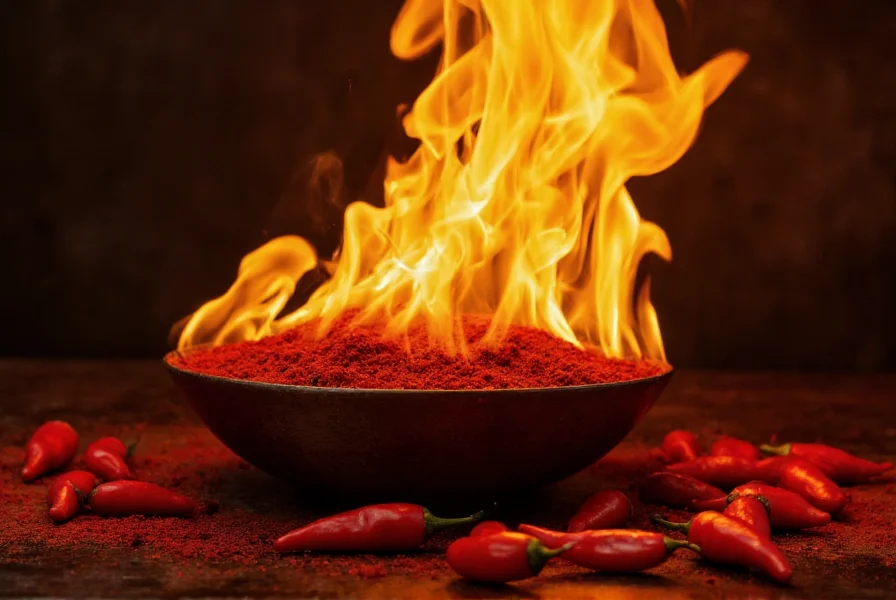When home cooks ask about chili magic, they're typically seeking that elusive combination of techniques that elevates their chili from good to extraordinary. The truth is, there's no single magical ingredient—rather, it's the thoughtful application of culinary science that creates what many describe as 'magic' in their chili pot.
The Science Behind Flavorful Chili
Understanding the chemical reactions that occur during chili preparation separates adequate recipes from truly exceptional ones. The Maillard reaction—the browning of meat—is your first critical step. When you properly sear meat at high heat before simmering, you create hundreds of new flavor compounds that form the foundation of complex chili.
Temperature control matters significantly. Maintaining a gentle simmer (180-205°F) rather than a rolling boil prevents toughening meat fibers while allowing flavors to meld. This precise temperature range optimizes the extraction of collagen from tougher cuts, transforming it into gelatin that gives chili its luxurious mouthfeel.

Essential Ingredients for Depth of Flavor
While recipes vary by region and preference, certain ingredients consistently contribute to what home cooks call 'chili magic':
| Ingredient | Function | Optimal Timing |
|---|---|---|
| Tomato paste | Concentrated umami and acidity | Added during meat browning |
| Dry sherry or bourbon | Alcohol dissolves flavor compounds | After vegetables, before liquid |
| Dark chocolate (70%+) | Deepens richness, balances heat | Last 30 minutes of cooking |
| Instant espresso powder | Enhances savory notes | With dry spices |
Secret Techniques That Transform Ordinary Chili
Professional chefs employ several underutilized methods that create noticeable improvements in chili quality:
The double-brown technique involves browning meat in two stages—first in large chunks, then after resting and portioning into smaller pieces. This creates more surface area for Maillard reactions without overcooking. Dry spice blooming in hot oil for 30-60 seconds before adding liquids releases volatile compounds that would otherwise remain locked in the powder.
Perhaps most impactful is the resting period. Allowing chili to cool completely, then refrigerating overnight before reheating creates dramatic flavor improvements as ingredients continue to meld through enzymatic reactions. This single step often transforms 'good' chili into 'magical' chili.
Avoiding Common Chili Mistakes
Even experienced cooks make errors that prevent their chili from reaching its potential:
- Over-reliance on pre-mixed chili powder—while convenient, these blends often contain fillers and inconsistent spice levels. Creating your own blend ensures freshness and control.
- Adding all liquid at once—gradually incorporating broth allows better control of consistency and prevents flavor dilution.
- Skipping the acid component—a splash of vinegar or fresh lime juice at the end brightens flavors that can become muddy during long cooking.
- Stirring too frequently—excessive stirring breaks down meat fibers and can make chili mushy.

Customizing Chili for Different Palates
True chili magic accommodates various taste preferences without compromising integrity. For heat control, add chipotle peppers in adobo for smoky heat or fresh jalapeños for brighter spice. Those preferring milder versions can achieve depth through smoked paprika and cumin rather than relying solely on heat.
Vegetarian adaptations maintain complexity by using mushrooms, walnuts, and textured vegetable protein that mimic meat's texture while providing umami. The key is maintaining the same layering techniques—browning vegetables thoroughly and building flavors gradually.
Storage and Reheating for Maximum Flavor
Proper storage preserves the magic you've created. Cool chili rapidly by placing the pot in an ice bath, then transfer to airtight containers. When stored correctly, chili often improves for up to five days as flavors continue to meld.
Reheat gently over medium-low heat, adding small amounts of broth if needed to restore consistency. Avoid boiling, which can cause flavors to dissipate. For frozen chili, thaw overnight in the refrigerator before reheating for best results.
Bringing It All Together
Chili magic emerges from understanding how ingredients interact and respecting the cooking process. By focusing on proper browning, controlled simmering, thoughtful ingredient additions, and adequate resting time, you create chili with layered complexity that surprises and delights. The most magical aspect? These techniques work consistently, transforming what might seem like luck into reliable culinary success.
What exactly is chili magic?
Chili magic refers to the combination of culinary techniques—including proper meat browning, spice blooming, controlled simmering temperatures, and strategic ingredient additions—that create exceptionally flavorful, complex chili with balanced heat and depth. It's the application of food science principles rather than any single secret ingredient.
Why does my chili lack depth of flavor?
Most home cooks miss critical flavor development steps: insufficient meat browning (Maillard reaction), adding spices directly to liquid instead of blooming in oil, cooking at too high a temperature, or skipping the essential resting period. Proper technique creates hundreds of flavor compounds that build complexity.
Does chili really taste better the next day?
Yes, scientifically. As chili cools and rests, enzymatic reactions continue to break down compounds, allowing flavors to meld more completely. The gelatin from collagen continues to distribute evenly, improving mouthfeel. For best results, cool completely, refrigerate overnight, and reheat gently.
What's the secret ingredient professional chefs use in chili?
Many professional chefs add small amounts of unexpected ingredients that enhance rather than dominate: a square of dark chocolate (70%+ cacao) for richness, a teaspoon of instant espresso powder to deepen savory notes, or a splash of dry sherry to dissolve flavor compounds. These should complement, not overpower, your base recipe.
How can I fix chili that's too spicy?
To reduce excessive heat, add dairy (sour cream or shredded cheese), acidic components (lime juice or vinegar), or sweetness (a small amount of honey). These don't remove capsaicin but counterbalance its perception. For future batches, control heat by removing seeds from peppers and adding heat gradually rather than all at once.











 浙公网安备
33010002000092号
浙公网安备
33010002000092号 浙B2-20120091-4
浙B2-20120091-4